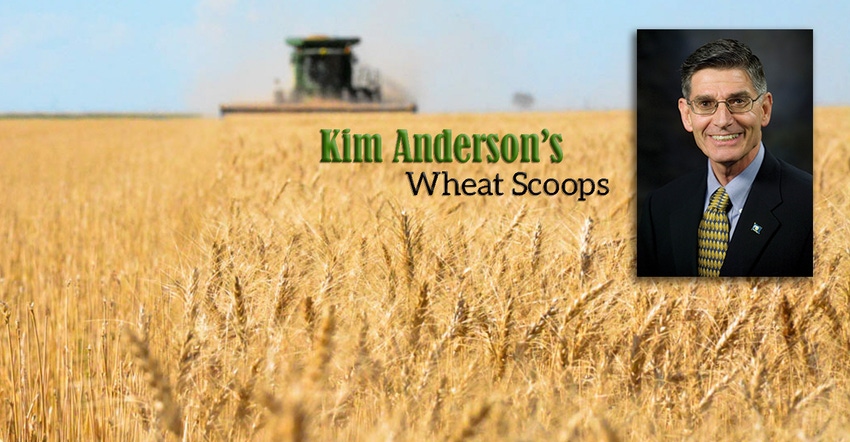May 5, 2023

When it comes to wheat production in the tri-state area of Kansas, Oklahoma, and Texas, the forecast is mostly bad and ugly. The good news is the expected cash prices and the guaranteed insurance price.
The major hard red winter (HRW) states are Kansas (27%), Montana (15%), Oklahoma (8%), Texas (7%), South Dakota (7%), and Colorado (4%). Percentages are shown for comparison and are only for the six states listed. Wheat crop conditions in Kansas, Oklahoma, and Texas are relatively bad while wheat crop conditions in Montana and South Dakota are relatively good.
For the states listed, the weighted average HRW wheat crop conditions for 2023 are 38% poor to very poor, 33% fair, and 29% good to excellent. The weighted average HRW wheat crop conditions for 2022 (June 6, 2022 report) were 42% poor to very poor, 35% fair, and 24% good to excellent.
2023 HRW wheat planted acres are 10% higher than for the 2022 crop. However, the increased planted acres are in states that have worse crop conditions than in 2022.
Kansas (11% increase in planted acres) has the lowest HRW wheat crop condition with 61% of the wheat crop listed as poor to very poor and 13% listed as good to excellent. Texas (26% increase in planted acres) is next with 47% poor to very poor and 13% good to excellent. Oklahoma’s wheat crop (11% increase in planted acres) is rated 46% poor to very poor and 20% good to excellent. Kansas, Oklahoma and Texas wheat crops are both bad and ugly.
By contrast, Montana’s wheat crop (2% fewer planted acres than in 2022) is rated 3% poor to very poor while 73% of the crop is rated good to excellent. It doesn’t get much better than Montana’s wheat condition.
South Dakota’s wheat crop (6% increase in planted acres) is rated 19% poor to very poor and 42% good to excellent.
With a 10% increase in U.S. HRW wheat planted acres and slightly better crop conditions than in 2022, the 2023 U.S. HRW wheat production may be expected to be slightly higher than 2022’s 521 million bushels.
The 10-year average U.S. HRW wheat production is 806 million bushels. Assuming a 10% increase in wheat production, the 2023 U.S. HRW wheat production will be 573 million bushels. U.S. HRW wheat stocks are expected to remain well below average.
At this writing, wheat may be forward contracted in Medford, Okla., for a 2023 harvest delivery price of $8.27. The harvest price is $8.32 in Perryton, Texas. The Altus, Okla., harvest price is $8.02.
On June 15, 2022, the wheat price in Medford, Okla., was $10.84. By July 1, 2022, the price had declined to $8.65.
It appears that Oklahoma and Texas producers will be facing their second “crop failure” in a row with a price slightly lower than last year.
Oklahoma’s 2022 wheat production was 68.6 million bushels compared to a 10-year average of 95.4 million bushels. Given that Oklahoma’s wheat crop condition is slightly worse than in 2022 but with a 10 percent increase in planted acres, Oklahoma’s wheat production is expected to be 76 million bushels.
Texas’s 2022 wheat production was 39 million bushels compared to a 10-year average of 70.2 million bushels. However, given Texas’s 9% increase in planted acres with only 47% of the crop rated poor to very poor compared to 82% of the crop rated the same in 2022, Texas’s 2023 wheat crop is expected to be significantly higher than last year’s 39 million bushels.
The bad and ugly labels describe the potential wheat yields and production. The GOOD is a relatively high wheat cash price and a guaranteed insurance price of $8.77.
About the Author(s)
You May Also Like






